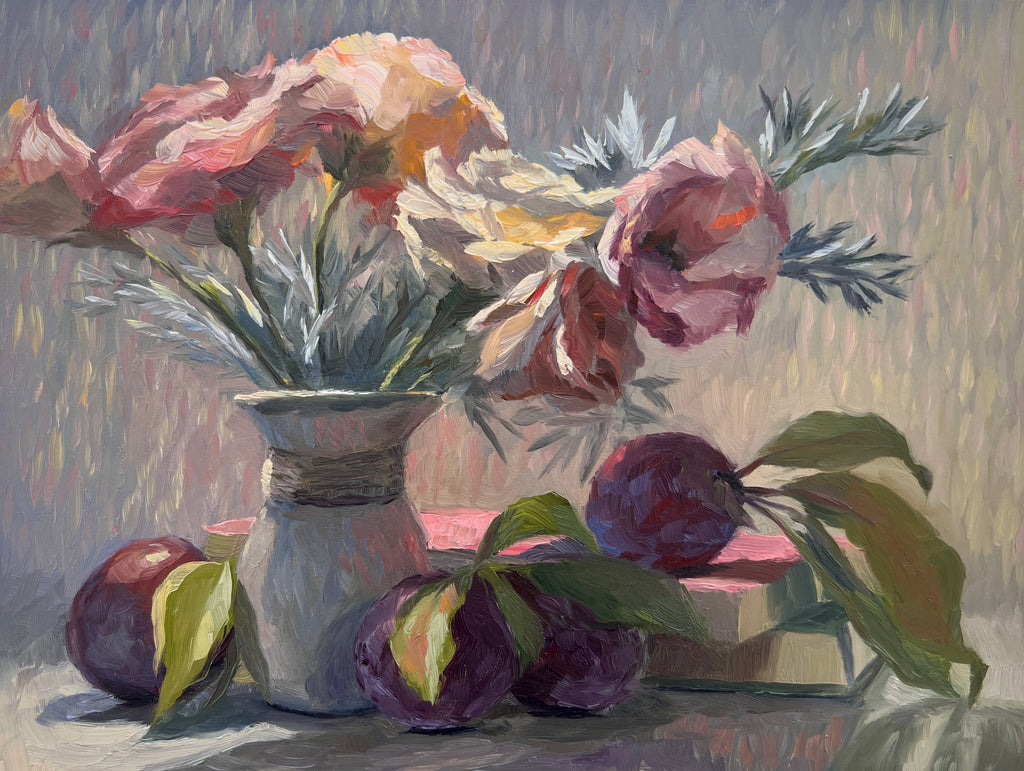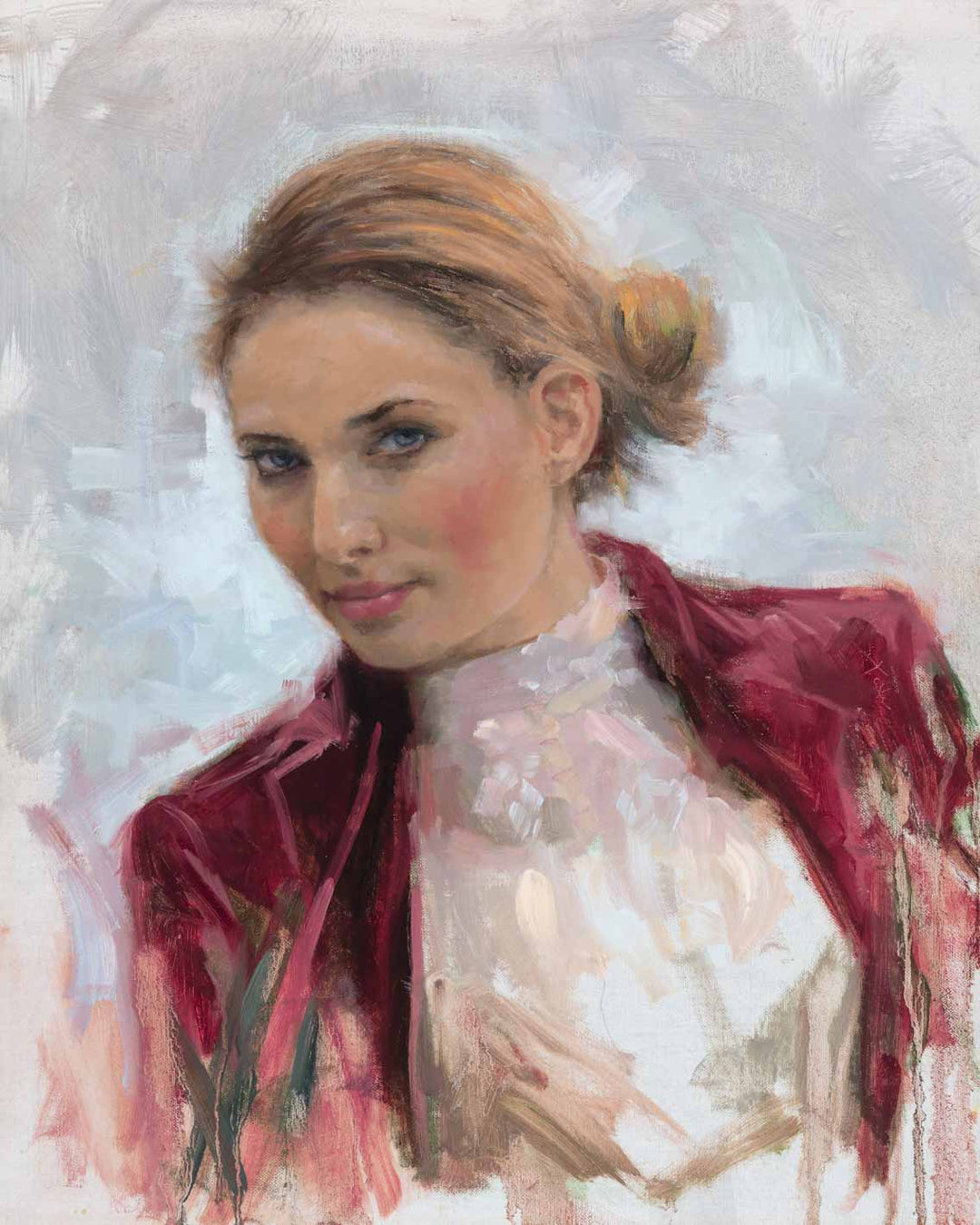Explore Curated Assortments of Oil Paintings for Sale
Explore Curated Assortments of Oil Paintings for Sale
Blog Article
Checking out All Regarding Oil Paints: A Guide to Understanding Their Charm and Worth
Oil paints have captivated audiences for centuries, supplying a glance into the creative mastery of numerous ages. Their rich background is linked with innovative techniques and extensive psychological expression. Comprehending the materials and approaches behind these art work can enhance appreciation. In addition, the marketplace for oil paints offers opportunities for investors and collectors alike. As one discovers this interesting world, the inquiry emerges: what makes an oil paint absolutely important?
The History of Oil Painting: A Journey Via Time
Although oil paint has roots that go back to ancient times, it absolutely thrived throughout the Renaissance, when artists discovered its versatility and abundant color possibility. Early instances can be mapped to the 7th century, with methods advancing notably throughout cultures. The medium came to be popular in Northern Europe in the 15th century, specifically with the jobs of artists like Jan van Eyck, that spearheaded its use for thorough realistic look and dynamic colors. This duration marked a separation from tempera paints, permitting for higher deepness and appearance. As oil painting spread, it influenced many musicians, causing masterpieces by distinguished numbers such as Leonardo da Vinci and Rembrandt. The tool's heritage continues, forming the art world well into contemporary times.
Comprehending Oil Paints: Products and Techniques
As artists check out the globe of oil paints, they run into a varied variety of materials and techniques that define this medium. The main parts of oil paint consist of pigments, which provide color, and drying out oils, such as linseed, that bind the pigments and promote application. Various additives can modify the paint's texture and drying out time, boosting versatility. Techniques like glazing, where transparent layers are accumulated, and impasto, which includes applying thick paint, enable for different visual effects. In addition, using brushes, scheme knives, and even fingers can create unique structures and surfaces. Comprehending these methods and materials enables artists to completely reveal their creativity and achieve the desired influence in their art work.
The Function of Color in Oil Paints
Color plays a critical role in oil paints, influencing both aesthetic charm and emotional resonance. Comprehending shade concept essentials, including the partnerships between hues, can boost an artist's capacity to convey state of mind and environment. In addition, grasping shade blending methods enables for greater deepness and richness in a painting's scheme.

Shade Theory Basics
Understanding color theory is vital for musicians collaborating with oil paints, as it develops the structure for producing harmonious and aesthetically interesting make-ups. Shade concept incorporates the research study of how colors connect, the shade wheel, and the connections between key, additional, and tertiary colors. Musicians use complementary colors to boost contrasts and produce centerpieces, while analogous shades promote unity and cohesiveness within an item. Furthermore, the ideas of awesome and cozy colors affect the understanding of deepness and area in a painting. Realizing these principles permits artists to adjust shade properly, leading the viewer's eye and communicating their intended message. Proficiency of shade concept ultimately improves an artist's capability to share emotions and ideas with their job.
Emotional Effect of Shade
The emotional impact of shade in oil paints plays a vital role in just how audiences regard and connect with artwork. Colors evoke certain sensations and moods, influencing the visitor's emotional state. For circumstances, cozy hues like reds and oranges can create a feeling of warmth and power, while trendy tones such as blues and greens typically stimulate peace or self-questioning. Artists purposefully select shade schemes to boost narrative components, leading the target market's psychological trip. The saturation and comparison of colors even more enhance these impacts, attracting interest and producing emphasis. Ultimately, the interaction of shades in oil paints not only enhances their visual allure but also serves as an effective tool for emotional expression, enhancing the audience's experience and interpretation.
Shade Combining Techniques
While numerous aspects of oil paint add to the general structure, mastering shade mixing techniques is essential for attaining preferred results and deepness. Color mixing can be come close to via numerous methods, including the subtractive and additive processes. Additive mixing includes combining colors of light, while subtractive mixing counts on pigments, where colors mix to produce brand-new shades. Artists frequently utilize a limited scheme to develop unified works, understanding the relationships in between main, secondary, and tertiary colors. Strategies such as glazing and scumbling additionally improve depth and luminance. By masterfully mixing shades, a musician can evoke feelings, produce prime focus, and accomplish a sense of realistic look, ultimately elevating the paint's aesthetic and psychological influence.
Famous Oil Painters and Their Iconic Works

Famed for their mastery of shade and method, oil painters have produced several of one of the most renowned art work in background. Distinguished artists like Vincent van Gogh mesmerized target markets with his stirring brushwork in "Starry Evening," while Claude Monet's "Impact, Sunup" laid the foundation for Impressionism. Leonardo da Vinci's "Mona Lisa" remains a long-lasting symbol of artistic genius, showcasing his skill in catching human expression. Meanwhile, Rembrandt's "The Night Watch" shows his ingenious use light and darkness. Other noteworthy numbers include Pablo Picasso, that revolutionized modern art with his vibrant experimentation in works like "Les Demoiselles d'Avignon," and Georgia O'Keeffe, whose lively representations of landscapes and blossoms aided specify American modernism. Each artist's one-of-a-kind design contributed considerably to the oil paint landscape.
Just how to Examine the High Quality of an Oil Painting
Reviewing the top quality of an oil painting involves a mindful evaluation of craftsmanship strategies, in addition to an analysis of shade and composition. Observing brushwork, layering, and the application of paint can reveal the musician's skill degree. In addition, the interplay of shades and the general setup of components contribute significantly to the painting's visual value.
Assessing Workmanship Techniques
A meticulous analysis of craftsmanship strategies is vital for identifying the top quality of an oil painting. Critics ought to initially analyze the application of paint; thick, distinctive brushstrokes may suggest an experienced hand, while overly consistent applications might indicate a lack of depth. oil paintings for sale. The layering strategy is also essential; the presence of lusters and differed thickness can improve luminance and complexity. Furthermore, the top quality of the materials utilized, such as the canvas and pigments, plays a significant duty in toughness and general aesthetic. Attention to detail in components like edges and changes between shades shows the artist's dedication to their craft. Ultimately, these strategies add to the paint's emotional influence and market value, working as indicators of the artist's ability and intent
Analyzing Shade and Composition
While examining the quality of an oil paint, one must focus on the interaction of color and structure, as these components are essential to the art work's overall effect. Shade selections can stimulate emotions and establish state of mind; therefore, the artist's palette need to be analyzed for consistency and comparison. A healthy make-up routes the visitor's eye and develops a feeling of unity. Musicians usually use strategies like the guideline of thirds or leading lines to improve visual rate of interest. Furthermore, the usage of light here and shadow can add deepness, enhancing the three-dimensionality of the painting. Eventually, a successful oil painting weds shade and make-up, involving the audience and inviting a deeper appreciation of the artist's vision and strategy.
Taking care of and Preserving Oil Paintings
Appropriate treatment and preservation of oil paintings is vital for maintaining their integrity and longevity. To safeguard these artworks, it is essential to present them away from direct sunshine, which can trigger fading and discoloration. Keeping a steady atmosphere with regulated temperature level and moisture additional aids in avoiding damages. Cleansing ought to be done gently making use of a soft, dry towel, preventing any rough chemicals that might hurt the paint or varnish. Regular inspections for indicators of degeneration, such as splitting or flaking, are suggested. When saving or transferring oil paints, appropriate extra padding and framing are essential to prevent physical injury. Eventually, attentive care adds to the visual charm and worth of oil paintings gradually.
The Market for Oil Paintings: Accumulating and Investing
Recognizing the market characteristics for oil paints is vital for enthusiasts and financiers alike. The worth of these artworks is influenced by different factors, consisting of the artist's online reputation, historical significance, and present trends. Enthusiasts frequently look for pieces that resonate directly while considering prospective recognition in worth. Galleries and auctions function as main locations for acquiring and marketing, with prices fluctuating based on need and rarity. Buying oil paintings calls for research study into the market, as well as an understanding of authenticity and provenance. Additionally, emerging musicians may supply possibilities for considerable returns, while developed names can command high costs. On the whole, a calculated strategy to collecting can generate both aesthetic pleasure and financial rewards.

Regularly Asked Questions
What Are the Environmental Effects of Oil Paint Products?
The environmental impacts of oil painting materials consist of the release of unpredictable organic substances (VOCs), dangerous waste generation, and resource removal for pigments. These elements add to contamination and eco-friendly deterioration, elevating worries among ecologically conscious artists and customers.
How Do Various Canvases Affect Oil Painting Outcomes?
Different canvases affect oil paint results significantly. Surface area, absorbency, and texture top quality can alter paint application, drying times, and shade vibrancy. Artists often select details canvases to achieve preferred impacts and boost their artistic expression.
Can Oil Paintings Be Brought Back if Harmed?
If harmed, Oil paintings can certainly be recovered. Specialist conservators utilize different methods to fix rips, clean surfaces, and address staining, making certain that the art work keeps its original elegance and value for future generations.
What Are the Signs of an Initial Oil Painting?
The signs of an initial oil painting consist of visible brush strokes, texture variants, and an unequal canvas weave (oil paintings for sale). Additionally, credibility may be validated with provenance, signatures, and the visibility of a varnish layer distinct to oil tools
Exactly How Has Modern Technology Influenced Modern Oil Paint Techniques?
Modern technology has actually substantially affected modern oil paint techniques by introducing electronic tools for preparation, improved products for texture and long life, and online systems for sharing and selling art, thus increasing artists' innovative opportunities and audience get to. Oil paint has roots that date back to old times, it truly grew during the Renaissance, when artists found its versatility and rich shade possibility. The emotional effect of shade in oil paintings plays a crucial function in just how viewers attach and perceive with artwork. While lots of facets of oil painting contribute to the general make-up, mastering color mixing methods is important for attaining preferred impacts and deepness. Reviewing the high quality of an oil painting includes a careful analysis of craftsmanship techniques, as well as an evaluation of color and make-up. While examining the quality of an oil paint, one need to concentrate on the interaction of shade and structure, as these components are basic to the artwork's overall impact.
Report this page